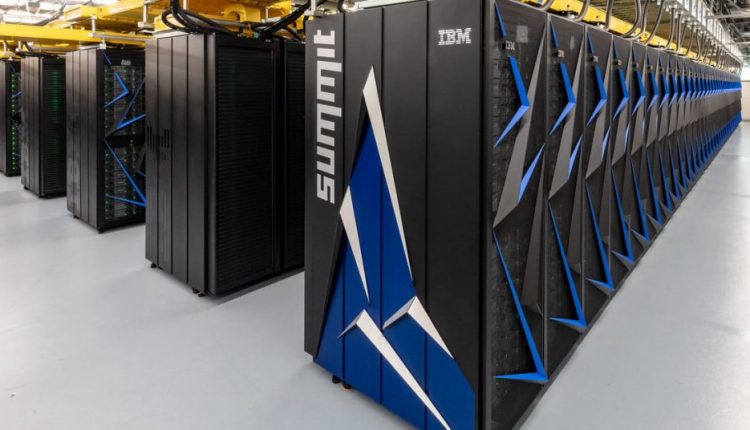A supercomputer called Summit is taking on the coronavirus
It may be technology in the form of jet planes that has been helping the coronavirus to move at speed around the world, but it is technology that will help to put it back in its box, too.
Take Summit, the world’s most powerful supercomputer.
Based at the U.S. Department of Energy’s Oak Ridge National Laboratory (ORNL) in Tennessee, Summit was recently deployed in the race to develop a vaccine for the coronavirus, officially known as COVID-19.
Researchers used the supercomputer to perform numerous simulations to identify drug compounds that could be used for a much-needed COVID-19 vaccine.
Using traditional methods for the task would have taken years, but Summit was able to identify and study 77 potentially useful drug compounds in the space of just two days.
It’s important to note that the results from Summit’s efforts do not mean that a cure or treatment for COVID-19 has been achieved.
However, according to IBM, which developed the supercomputer, scientists are hoping that Summit’s findings will inform future studies and provide a focused framework for further investigation of the compounds that will reveal if any of them have the characteristics to attack and kill the virus. It added: “But no doubt, Summit has helped shrink the front-end part of the process of conventional methods [that] scientists would normally have used.”
Why has Summit proved useful for scientists in this particular research? As per IBM: “Computer simulations can examine how different variables react with different viruses. Each of these individual variables can comprise billions of unique data points. When these data points are compounded with multiple simulations, this can become a very time-intensive process if a conventional computing system is used.”
Unveiled in 2018, IBM’s Summit supercomputer is powered by 9,216 IBM Power9 CPUs and more than 27,000 NVIDIA V100 Tensor Core GPUs and is capable of processing 200 quadrillion calculations per second. That makes it more than a million times faster than that laptop you’re using. It was built to take on big global challenges across business, medicine, science, and engineering. Let’s hope its latest efforts have bought us some time.
In other examples of how technology is being used to fight COVID-19, check out this piece on MIT’s exciting new tracking app that has the potential to slow the spread of the virus while work continues to develop a vaccine.


